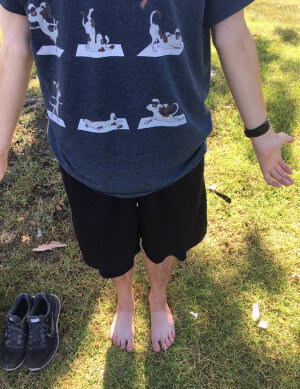By Briana Nahoul, Career Development Coordinator CLE Costa Mesa

The Good News: There are simple and effective tools that can help to alleviate the symptoms and unpleasant side effects of stress. With this being said, let’s discuss stress management practices, shall we?
Stepping Into Nature
Have you ever noticed a sense of relaxation while spending time outdoors? While people experience the feeling of relaxation to different degrees, and through their individual lenses of perception, many report that their stress levels decrease when they are at the beach, in the forest, or taking a walk in nature. Depending on one’s environment, a walk outdoors could potentially bring a sense of tranquility.
Earthing

*Keeping in mind that we all have different sensory needs and preferences, one can customize this practice to suite their own individual needs.
Why Is Earthing Helpful?
The Earth carries an enormous negative charge. It’s always electron-rich and can serve as a powerful and abundant supply of antioxidant electrons. Negative ions are oxygen atoms charged with an extra electron. They are created in nature by the effects of water, air, sunlight and the Earth’s inherent radiation.
“People today are exposed to much more positive charge than anyone in the past due to electromagnetic fields (EMF) coming from technology such as computers, cell phones and microwaves. When we have too much of this positive energy and are out of balance, things begin to go wrong. We can become stressed, inflamed, have trouble sleeping, and be in pain and not functioning at our best.” – (Earthing for Autism and ADHD)
While grounding can benefit everyone, studies indicate that it is extremely important for individuals with Autism and ADHD. This population can be prone to heightened levels of stress and anxiety, and may have difficulty sleeping at night. Grounding may not be a complete cure, but it serves as a simple but powerful complimentary approach to managing the symptoms of stress and anxiety. Grounding can be extremely helpful for working professionals, students, and anyone who spends most of their time indoors, or exposed to technology in high doses.
See http://www.earthinginstitute.net
*If the outdoor environment is not conducive to tranquility or a specific individual’s needs, there are effective grounding techniques that can be utilized indoors.
Indoor Grounding Techniques:
- Water- Taking a shower or bath can be extremely grounding.*If a shower or bath is not accessible, running hands under cold water can potentially help an individual feel more grounded and “in their own body” if they are stressed or heightened.
- Tree Root Visualization Exercise- Find a moment to stand or sit with your eyes closed. Focus on the connection between your feet and the ground underneath you. Imagine you have tree roots growing out of the bottoms of your feet. Continue to visualize these roots growing and extending down, breaking through the carpet or cement, and into the soil. Imagine you are firmly anchored and rooted into the Earth like a tree. It helps to be as vivid and detailed as possible when engaging in this visualization technique. This can be done in a home, office, classroom, or any setting. When you open your eyes, take a moment to notice how you feel after the visualization.







